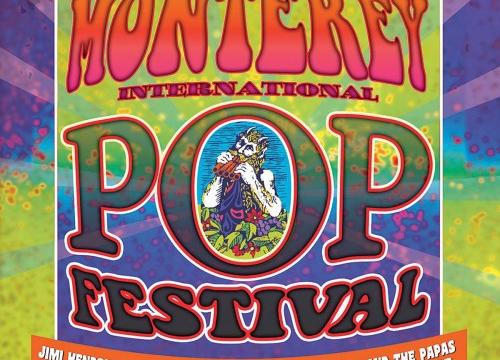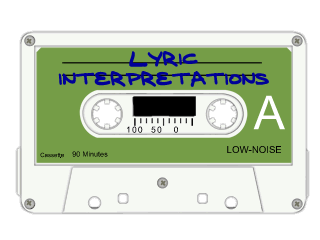Eight Reasons Why The Monterey International Pop Festival Was Better Than Woodstock

Two concerts serve as a kind of set of bookends to the whole hippie generation and peak of rock-n-roll: The Monterey International Pop Festival (Monterey, California, 1967) and Woodstock (Bethel, New York, 1969). Yet one of these is celebrated and revered and the other is "Monterey who?" Well, yes, Monterey, it exists, there's a Wikipedia page about it. Here, we'll throw caution to the wind and make a controversial statement that Monterey was underrated while Woodstock is far, far overrated.
1. Monterey had Otis Redding and The Mamas & The Papas.
In fact, it introduced many of the names that would become big in later years, including Simon & Garfunkel, The Jimi Hendrix Experience, and The Byrds. That can happen, of course, when you're two whole years earlier, so we shall not belabor.
2. It rained at Woodstock.
Seen those pictures of hippies huddled together balancing a sheet of cardboard over their heads? They weren't just goofing around, they were trying to dry out a little. And speaking of conditions...
3. Woodstock was a logistical nightmare.
At the highest estimate, Monterey had 60,000 attendees, allowing it to be a far tighter, more organized affair. Woodstock had 300,000+ attendees, and with it came some of the most irresponsible crowd management ever seen, with food and water shortages, overflowing toilets, and medical emergencies. There were even three recorded fatalities and four miscarriages. John Fogerty, in a famous quote, described it as "...sort of like a painting of a Dante scene, just bodies from hell, all intertwined and asleep, covered with mud."
4. Woodstock was also a legal nightmare.
The organizers and bands involved all split up to have a round-robin of lawsuits that dragged on for years. In total, about 80 lawsuits were filed in connection with the event, and the citizens of Bethel voted out their city supervisor specifically for allowing Woodstock to happen. The town kept up a half-vigilante campaign to drive away anybody who would revisit the site for the nostalgia of it - this went so far as spreading chicken manure over the site and surrounding the area with a blockade of tractors and police cars.
5. The most famous song about Woodstock was written by somebody who wasn't even there.
Joni Mitchell wrote "Woodstock", the song that Crosby, Stills, Nash and Young would later make a Top-40 hit, from the confines of her bed while tearily watching the news on TV. This speaks to the romanticized mythology that surrounds Woodstock - second-and-third-generation hippies march around in their tie-dye shirts as if they were uniforms, preaching the gospel of an event that happened before they were even conceived. Not that we're not OK with that - if other cultures can re-enact the Civil War or go to festivals to celebrate the Renaissance, hippies can memorialize the concert their parents attended. We're just asking some of them to at least have the dignity to have a sense of humor about it, alright?
6. Bob Dylan actually fled Woodstock.
True, Dylan didn't go to Monterey, either. But Monterey wasn't planted in his backyard with the specific aim of luring him to play. Woodstock tried to woo Dylan, and Dylan ran like a bat out of hell all the way to England just to spite them. Despite this, both The Band and Blood Sweat & Tears did show up. (BS&T had ties to Dylan and The Band via former member Al Kooper.)
7. Woodstock had a series of increasingly tragic sequels.
All of them were successively disasters, but the 1999 one actually had fights, riots, rapes, and fires causing them to cancel the show. MTV's VJ Kurt Loder was quoted: "It was dangerous to be around. The whole scene was scary. There were just waves of hatred bouncing around the place... It was clear we had to get out of there... It was like a concentration camp." Whereas Monterey's name remains unsullied.
8. Woodstock is ridiculously commercialized today.
In spite of Bethel's original attitude towards the festival, today the town has peace signs and doves perched on guitar stocks every two feet. Every store is crammed with hippie memorabilia, on sale for tourist-gouging prices. They have a plaque at the site and proudly declare themselves "the most famous small town in America" as if they'd never put up signs forty years ago urging people to boycott the farmer who rented out his pasture to the festival in the first place.

 A new era for Millennial favorite, Linkin Park
A new era for Millennial favorite, Linkin Park  Anime to watch for the soundtracks… and other reason...
Anime to watch for the soundtracks… and other reason... .jpg) Dolly, we need you
Dolly, we need you  The Stranger Things Effect: How new media is drawing...
The Stranger Things Effect: How new media is drawing...  The most underrated soundtrack of the early 2000s
The most underrated soundtrack of the early 2000s  Buy the Soundtrack, Skip the Movie: Brainscan (1994)
Buy the Soundtrack, Skip the Movie: Brainscan (1994)  Let’s Go to the Hop - Ignore That Door’s Four Bunnie...
Let’s Go to the Hop - Ignore That Door’s Four Bunnie...  Forgotten Weird Music Videos of the Ancient 80s | vol 3
Forgotten Weird Music Videos of the Ancient 80s | vol 3  Forgotten Weird Music Videos of the Ancient 80s | vol 2
Forgotten Weird Music Videos of the Ancient 80s | vol 2  Forgotten Weird Music Videos of the Ancient 80s | vol 1
Forgotten Weird Music Videos of the Ancient 80s | vol 1  Let’s Chase Taylor Swift Rumors
Let’s Chase Taylor Swift Rumors  When the Beatles Touched Off a Movie War
When the Beatles Touched Off a Movie War  When Mike Bloomfield Composed a Soundtrack For Andy ...
When Mike Bloomfield Composed a Soundtrack For Andy ...  Yet Another List of Bad Song Covers
Yet Another List of Bad Song Covers  Why Does Everybody Pick On Liberace?
Why Does Everybody Pick On Liberace?  Trainspotting Soundtrack Revisited : One of the Best...
Trainspotting Soundtrack Revisited : One of the Best...  Nicki Minaj and Megan Thee Stallion: Bringing Back t...
Nicki Minaj and Megan Thee Stallion: Bringing Back t...  Quirky Songs About Los Angeles
Quirky Songs About Los Angeles  Penguin Pete’s Obligatory Penguin Cafe Orchestra Post
Penguin Pete’s Obligatory Penguin Cafe Orchestra Post  Heart | How Bad Are Those Animals?
Heart | How Bad Are Those Animals?  That Time Ronnie James Dio Saved Black Sabbath’s Bacon
That Time Ronnie James Dio Saved Black Sabbath’s Bacon  What is a Left Hand Path? - Entombed and Swedish Dea...
What is a Left Hand Path? - Entombed and Swedish Dea...  Song Analysis Corner: Convoy (1975)
Song Analysis Corner: Convoy (1975)  What’s Up With Margaritaville?
What’s Up With Margaritaville?  This Album Links Duran Duran, Andy Warhol, and Kurt ...
This Album Links Duran Duran, Andy Warhol, and Kurt ...  Your Back-To-School Playlist
Your Back-To-School Playlist  Cucumber Castle | the other Bee Gees Movie
Cucumber Castle | the other Bee Gees Movie  Danny Elfman Scores New Film; Other Movie Weirdness!
Danny Elfman Scores New Film; Other Movie Weirdness!  Sparks Is Not Crying in Their Latte
Sparks Is Not Crying in Their Latte  Travis Scott : Rapper, Cannabis Entrepreneur, Filmmaker
Travis Scott : Rapper, Cannabis Entrepreneur, Filmmaker  Anders Runestad – Author and Music Blogger
Anders Runestad – Author and Music Blogger  What If They Really ARE Giants?
What If They Really ARE Giants?  Prince’s Underrated Under the Cherry Moon
Prince’s Underrated Under the Cherry Moon  Six Degrees of Blondie
Six Degrees of Blondie  Six Degrees of: Adam and the Ants
Six Degrees of: Adam and the Ants  Discovering Beat-Club | Vintage West German Music Show
Discovering Beat-Club | Vintage West German Music Show  Eurovision Contest Winners part 2
Eurovision Contest Winners part 2  Song Analysis Corner: Snoopy vs. the Red Baron | The...
Song Analysis Corner: Snoopy vs. the Red Baron | The...  Eurovision Contest Winners part 1
Eurovision Contest Winners part 1  KISS SUXX!
KISS SUXX!  You Haven’t Met Your Last Reefer Man
You Haven’t Met Your Last Reefer Man  Ruth Underwood and the “Zappa sound”
Ruth Underwood and the “Zappa sound”  Catchy Commercial Earworms | vol 2
Catchy Commercial Earworms | vol 2  Song Analysis Corner: “Trouble Every Day” | Frank Zappa
Song Analysis Corner: “Trouble Every Day” | Frank Zappa  Blues Music For Your Great Recession
Blues Music For Your Great Recession  We Can Fix America If We Just Bring Back Schoolhouse...
We Can Fix America If We Just Bring Back Schoolhouse...  Song Analysis Corner: Istanbul (Not Constantinople)
Song Analysis Corner: Istanbul (Not Constantinople)  Music To Shoot Down UFOs To
Music To Shoot Down UFOs To  Are You Ready For AI Music?
Are You Ready For AI Music?  How Dreary Was 1970s Adult Contemporary?
How Dreary Was 1970s Adult Contemporary?  I Just Called To Say Stevie Wonder's Song Deserved a...
I Just Called To Say Stevie Wonder's Song Deserved a...  "Knock On Wood" | The Real Song To Remember From Cas...
"Knock On Wood" | The Real Song To Remember From Cas...  Dr. Dre's Not Gonna Take This Anymore
Dr. Dre's Not Gonna Take This Anymore  Apache - The Shadows | A Surf-Rock Safari
Apache - The Shadows | A Surf-Rock Safari  New Year : New Music Artists You (Probably) Haven't ...
New Year : New Music Artists You (Probably) Haven't ...  Song Odyssey | I Put A Spell on You
Song Odyssey | I Put A Spell on You  KMart and S.S. Kresge | Music Mystery?
KMart and S.S. Kresge | Music Mystery?  Did I Ever Introduce You To Horrorpunk?
Did I Ever Introduce You To Horrorpunk?  Song Analysis Corner : The Coffee Song
Song Analysis Corner : The Coffee Song  Duran Duran Finally Got Inducted
Duran Duran Finally Got Inducted 